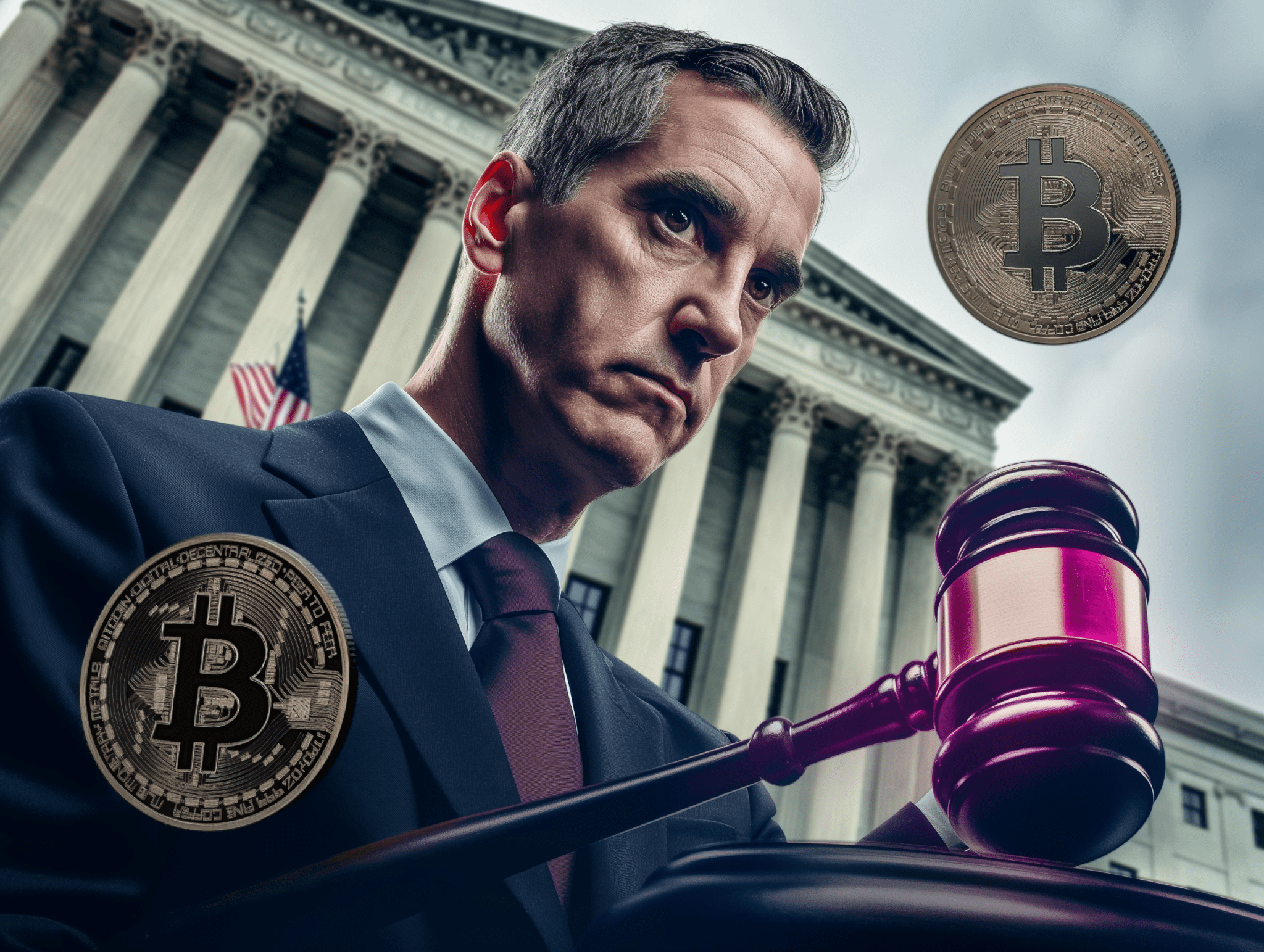The United States Federal Reserve, as the central bank of the world’s largest economy, wields significant influence over global financial markets. In recent years, its monetary policy decisions have increasingly affected the cryptocurrency market, demonstrating the growing integration of digital assets into the broader financial ecosystem.
From dramatic price surges during periods of low interest rates to sharp corrections as rates rise, cryptocurrencies have shown remarkable sensitivity to the Fed’s actions. This article examines the relationship between Federal Reserve rate decisions and the crypto market, tracing the impact from recent rate hikes back to the early days of bitcoin.
2023-2024: Interest Rate Stability and Expectations of Cuts
As of September 17, 2024, the Federal Reserve’s benchmark interest rate stands at a 23-year high of 5.25%-5.50%. This rate has been maintained for several consecutive meetings as the Fed has worked to bring inflation down towards its 2% target. Recent economic indicators suggest that inflation has been cooling and the labor market has shown signs of moderation.
A new decision on interest rates is expected on September 18, 2024, when the Federal Open Market Committee (FOMC) concludes its two-day meeting. Market participants and economists are widely anticipating the first interest rate cut since March 2020. However, there is some uncertainty about the size of the potential cut, with opinions divided between expectations of a 0.25 percentage point reduction and a larger 0.50 percentage point cut.
In 2023, the Federal Reserve maintained a stable interest rate environment, keeping the federal funds rate within the 5.25% to 5.50% range. This period of stability followed a series of rapid rate hikes in 2022 aimed at curbing inflation. The decision to hold rates steady was influenced by the Fed’s assessment that inflation was gradually declining, although it remained above the target level. This stability provided a sense of predictability in the financial markets, including the cryptocurrency sector, which had experienced significant volatility during the previous rate hikes.
As the Fed hinted at potential rate cuts in 2024, the cryptocurrency market reacted positively. Expecting lower rates was a possible catalyst for growth in riskier assets like cryptocurrencies. Bitcoin, in particular, showed signs of recovery, buoyed by expectations of increased liquidity and reduced borrowing costs. Additionally, the approval of Bitcoin ETFs further supported the market, attracting new inflows and driving prices higher. This period highlighted the crypto market’s sensitivity to monetary policy shifts and its potential to benefit from a more accommodative interest rate environment.
Interest Rate Increases in 2022: The Great Crypto Correction
In 2022, the Federal Reserve embarked on a series of aggressive interest rate hikes to combat rising inflation, marking one of the most significant shifts in U.S. monetary policy in recent years. This decision had a profound impact on the cryptocurrency market, leading to a sharp decline in the prices of major cryptocurrencies, including Bitcoin. As interest rates increased, the cost of borrowing rose, and the appeal of riskier assets like cryptocurrencies diminished. Investors began to favor safer, income-generating assets such as bonds, leading to a significant outflow of capital from the crypto market.
The crypto market’s reaction to the Fed’s rate hikes in 2022 underscored the sensitivity of digital assets to macroeconomic factors and highlighted the challenges faced by cryptocurrencies in navigating an environment of tightening monetary policy. The increased cost of capital and reduced liquidity in the market made it difficult for investors to justify holding non-yielding assets like cryptocurrencies, leading to a bearish trend throughout the year. This period served as a stark reminder of the interconnectedness between traditional finance and the crypto world, demonstrating that even decentralized assets are not immune to the effects of centralized monetary policy decisions.
November 2021 Rate Hike Announcement: The Beginning of the End
In November 2021, the Federal Reserve signaled its intention to raise interest rates in response to rising inflation concerns, marking a turning point for the crypto market. The anticipation of rate hikes led to a significant correction in cryptocurrency prices, with Bitcoin losing a substantial portion of its value in the following months. This announcement underscored the sensitivity of the crypto market to changes in monetary policy expectations. As investors adjusted their portfolios in anticipation of tighter financial conditions, the demand for cryptocurrencies waned. This period illustrated the challenges faced by digital assets in maintaining their appeal amid shifting macroeconomic dynamics, particularly when confronted with the prospect of reduced liquidity and higher borrowing costs.
March 2020 Emergency Rate Cuts: Fueling the Crypto Bull Run
In March 2020, as the COVID-19 pandemic sent shockwaves through the global economy, the Federal Reserve implemented emergency rate cuts, slashing interest rates to near zero and launching a massive quantitative easing program. This unprecedented move, aimed at stabilizing financial markets and supporting the economy, had a significant positive impact on the cryptocurrency sector. As traditional financial markets stabilized, investors turned to cryptocurrencies as an alternative investment, leading to a surge in prices.
The rate cuts in 2020 marked the beginning of a remarkable bull run for cryptocurrencies, with Bitcoin and other digital assets reaching new all-time highs in the following months. The influx of liquidity and low borrowing costs encouraged risk-taking, driving up demand for cryptocurrencies. This period demonstrated the potential of digital assets to benefit from expansive monetary policy, as investors sought higher returns in a low-interest-rate environment.
December 2015 Rate Hike: A Turning Point
The Federal Reserve’s decision to raise interest rates in December 2015 marked the first increase since the 2008 financial crisis and signaled the beginning of a gradual tightening cycle. This move introduced a new element of uncertainty into the crypto market, as investors reassessed their risk exposure in light of changing economic conditions. While the immediate impact on cryptocurrency prices was not as pronounced as in later years, the 2015 rate hike served as a harbinger of the growing influence of monetary policy on digital assets.
This period highlighted the evolving relationship between cryptocurrencies and traditional financial markets. As the Fed embarked on a path of gradual rate increases, the crypto market began to experience greater volatility, reflecting its growing integration into the broader financial ecosystem. The 2015 rate hike set the stage for the more pronounced effects of monetary policy on cryptocurrencies that would be observed in subsequent years.
Zero Interest Rate Policy (ZIRP) 2008-2015: The Crypto Incubation Period
The Zero Interest Rate Policy (ZIRP) implemented by the Federal Reserve from 2008 to 2015 played a pivotal role in the early development of the cryptocurrency market. By maintaining interest rates near zero in response to the global financial crisis, the Fed inadvertently created a fertile environment for the nascent crypto industry. This prolonged period of ultra-low rates encouraged investors to seek higher yields in alternative assets, including the then-novel concept of digital currencies.
During the ZIRP era, cryptocurrencies began to gain traction as a viable investment option, attracting interest from a diverse range of investors. The low interest rate environment facilitated experimentation and innovation within the sector, allowing projects like Bitcoin and Ethereum to flourish. This period laid the groundwork for the subsequent expansion of cryptocurrencies, setting the stage for their increased prominence in the global financial landscape.
Conclusion
In conclusion, the Federal Reserve’s rate decisions have proven to be a powerful force shaping the cryptocurrency landscape. From providing a nurturing environment during the zero-interest-rate era to triggering significant market corrections with rate hikes, the Fed’s influence on the crypto world has been undeniable. As the cryptocurrency market continues to mature, understanding and anticipating the impact of monetary policy will remain crucial for investors and industry participants alike.
The recent period of interest rate stability in 2023 and the anticipation of potential rate cuts in 2024 demonstrate the ongoing sensitivity of the crypto market to Fed policy. The positive reaction of cryptocurrencies to the prospect of a more accommodative monetary environment, coupled with developments such as the approval of Bitcoin ETFs, underscores the evolving relationship between traditional finance and the digital asset space. As we move forward, the interplay between Federal Reserve decisions and cryptocurrency markets will likely continue to be a key factor in shaping the future of this dynamic and rapidly evolving sector.




















